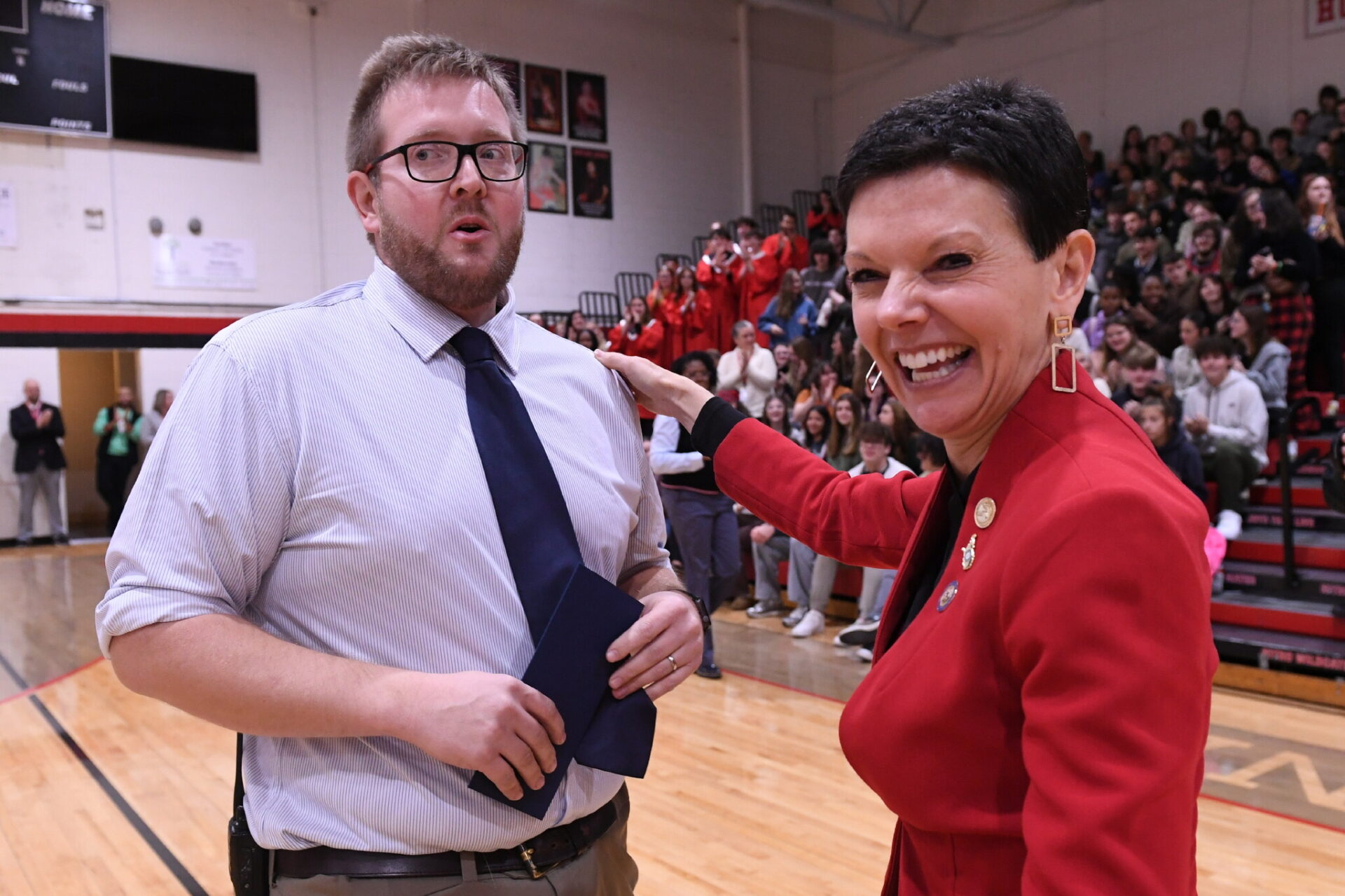Nitro High School’s engineer-turned-educator, Adam Wolfe, had the surprise of a lifetime Tuesday morning at a seemingly routine assembly.
Wolfe, a math and engineering teacher, was as shocked as his students when Milken Educator Awards Vice President Stephanie Bishop declared him the winner.
“Adam Wolfe really stands out as being an innovator,” Bishop said. “He is all about hands-on learning in his engineering and math classes. And because of his dedication to this community and being a problem solver, we sought him out as the Milken Educator for 2024.”
There is no application process for this award. Each year, the foundation selects teachers from across the U.S. to recognize excellence in teaching with an unrestricted $25,000 cash prize.
The winner is left a complete surprise to everyone except the state’s Department of Education — and perhaps the school’s principal and some administrators.
Wolfe is West Virginia’s only 2024 to 2025 Milken Educator Award recipient, but the state’s 80th teacher named a Milken Educator since the program began in 1987.
Milken Family Foundation
Wolfe stood out to the Milken Foundation because he uses his experience as a former engineer to support students and connect them to community projects and internship opportunities.
“We are working with the state Department of Education here in West Virginia to find the best of the best,” Bishop said. “We are looking for the top 1 percent of educators to be Milken Educators in this state.”
Wolfe said he felt shock, gratitude, humility and some guilt because he thinks many other excellent teachers at Nitro High School deserve the recognition.
“It’s awesome to be recognized for this, and I hope I do make an impact on my kids’ lives, but I know I’m certainly not the only person in the building who does that,” Wolfe said. “I don’t pretend to know what’s best for those kids. But, as I said earlier, I hope to give them the space for them to figure that out.”
In addition to recognition and the cash prize, Wolfe won an all-expense paid trip to an education forum in Los Angeles, Ca. in April 2025.
Milken Family Foundation
